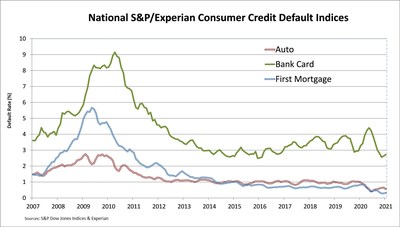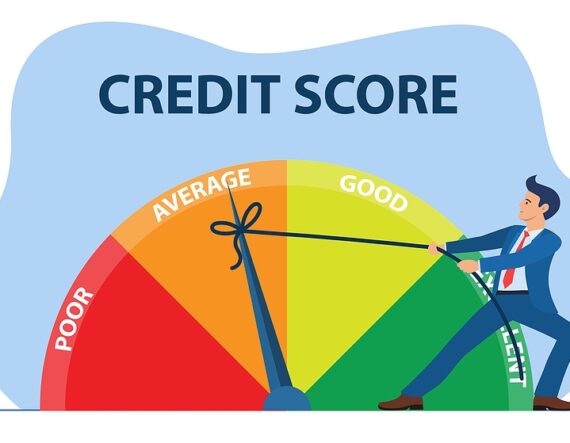FICO 10 and FICO 10T Explained by a Credit Expert
FICO 10 and FICO 10 T are new credit scoring models developed by FICO that have the potential to change the credit industry in a major way.
Credit expert John Ulzheimer, who worked for FICO for seven years and has almost 30 total years of experience in the industry, explained what FICO 10 and FICO 10 T are and what they mean for you as a consumer in an episode of Credit Countdown.
Disclaimer: The views and opinions expressed in this article are strictly those of John Ulzheimer and do not necessarily reflect the official stance or position of Tradeline Supply Company, LLC. Tradeline Supply Company, LLC does not sell tradelines to increase credit scores and does not guarantee any score improvements. Tradelines can in some cases cause credit scores to go down.
What Are FICO 10 and FICO 10 T?
The FICO 10 and FICO 10 T credit scoring models are part of the latest generation of credit scores in FICO’s lineup, which also includes FICO score generations 2, 3, 4, 5, 8, and 9. Currently, the most widely used base model is FICO 8. With every new FICO score, FICO tries to improve upon the power of their scores to predict consumer defaults, which is the overarching goal of credit scores generally.
The tenth generation of FICO credit scores is technically called the FICO 10 Suite, as it contains multiple different versions of FICO 10, although in common language this entire group is often simplified as just “FICO 10.”
FICO 10 was announced in early 2020, and it has received much media attention due to the changes that distinguish it from its earlier counterparts.
Why Are Consumers Worried About FICO 10?
Media coverage of the new suite of credit scores tends to focus on the claim that some consumers may see their credit scores go down with FICO 10.
However, John Ulzheimer says that this creates “controversy where controversy doesn’t exist.”
Why? Here are two reasons.
1. The FICO 10 Suite is a normal redevelopment of the FICO credit scoring system.
As we discussed above, FICO regularly redevelops their credit scoring models in order to make them more and more predictive of credit risk.
This is just like what other companies do with their products. Think of Apple and the iPhone: there isn’t just one iPhone anymore. They introduce newer generations of the iPhone, and people want to upgrade to the new and improved models that work better.
This does not mean that the previous versions were “bad,” just that there is a new version that may be better.
2. Your credit scores will be different every time FICO redevelops its credit scoring system.
With every change that is made to the credit scoring system, as an inevitable consequence, your credit score will change. That’s not necessarily a bad thing. Your credit score could go up, or it could go down, or it could remain similar to where it was.
Regardless of any changes made, the fact is that if you have a good credit score with one scoring model, you will likely still have a good credit score with a different model. The same goes for bad credit scores. Although different credit score versions have different ways of going about it, they all share the ultimate goal of predicting a consumer’s credit risk, and this will be reflected in your scores regardless of which particular credit scoring model is used.
There are dozens of different credit scoring models, and your credit score is going to be different with each model.
How Will FICO 10 Affect Your Credit Score?
In terms of how FICO 10 could affect your score, John says that newer credit scoring models such as FICO 10 do a better job of separating high-risk and low-risk consumers than older models. In other words, if you have good credit, your score is likely going to be higher with FICO 10. If you have bad credit, your credit score is likely going to be lower with FICO 10.
According to John, this is normal and it is what you would expect to see with any new credit scoring system.
What About FICO 10 T (FICO 10 Trended)?
The “T” in FICO 10 T stands for trended data.
FICO 10 T is unique among FICO’s roster of credit scores because it is the only tri-bureau FICO score on the market with trended data. (FICO competitor VantageScore also has a credit score that uses trended data, VantageScore 4.0.)
What Is Trended Data and Why Is It Unique?
When you check your credit report, you may see that some of your accounts show a history of your balances, your payments due, and how much your payments actually were each month for the past 24 months.
Being able to see this information over time makes it easy to understand the trends in your usage of the account.
Here are some examples of the types of insights trended data can provide:
If you are running up large balances over time.
If you are keeping your balances relatively low over time.
If you have been making your minimum payments over time.
If you have been paying in full over time.
What percentage of your balance you have been paying over time.
Trended data allows credit scores to consider trends in how you have managed your accounts over the past 24 months.
FICO 10 T can now consider this data as part of calculating your credit score.
The information trended data provides is very valuable because it adds another level of data that helps to predict the likelihood that a consumer will default.
For example, a consumer who has a perfect payment history and pays in full every month or keeps a relatively low balance is probably going to score better with FICO 10 than a consumer who maxes out their credit cards or keeps a relatively high balance over time, even if they pay off their credit cards every month.
The research done on trended data demonstrates that transactors, those who charge balances and then pay in full, carry less risk than revolvers, who roll over a portion of the balance from month to month rather than paying it off in full each month.
Consumers who carry a balance over time instead of paying their balances off in full every month will be penalized by FICO 10 T.
To summarize, trended data is what makes FICO 10 T different from the base version of FICO 10. FICO 10 still works like other traditional credit scoring models in that it only looks at a “snapshot” of your credit report at a given time.
Should You Be Worried About the FICO 10 Suite of Credit Scores?
You don’t need to stress out about FICO 10, especially if you have good credit, as you will still have a good credit score under FICO 10.
The same practices that are important in other credit scoring systems still apply to FICO 10 and will still reward you with a good score:
Always make your payments on time.
Pay off your credit cards in full every month.
Keep your balances low relative to your credit limits (maintain a low revolving utilization ratio).
Limit the number of hard inquiries that hit your credit report by only applying for credit when you actually need it.
We hope this article helped you understand the new FICO 10 and FICO 10 T credit scores. Check out the video below, and browse our Knowledge Center and subscribe to our YouTube channel for more content like this!
Read more: tradelinesupply.com














